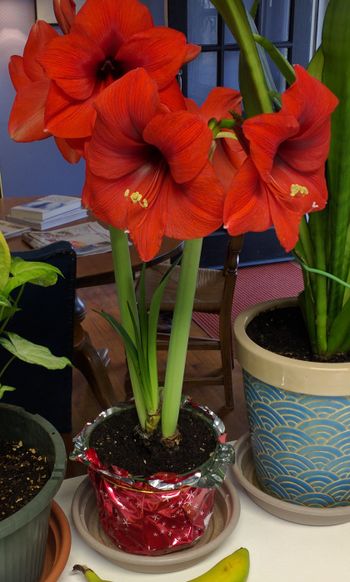Amaryllis: Difference between revisions
Jump to navigation
Jump to search

imported>Chris Day No edit summary |
imported>Pat Palmer (adding a photo of an amaryllis coaxed to bloom during winter) |
||
| Line 1: | Line 1: | ||
{{subpages}} | {{subpages}} | ||
{{Image|Amaryllis red.jpg|right|350px|An amaryllis bulb induced to bloom in winter may produce multiple stalks of showy, lily-like blossoms.}} | |||
{{Taxobox | {{Taxobox | ||
| color = lightgreen | | color = lightgreen | ||
Revision as of 11:40, 31 January 2021
| Hippeastrum | ||||||||||||
|---|---|---|---|---|---|---|---|---|---|---|---|---|
| Scientific classification | ||||||||||||
|
Amaryllis is the common name for a group of showy ornamental perennials in the genus Hippeastrum.
These flowers are native to tropical South America, most varieties require protection and care to grow even in temperate climates. Where it is cultivated, the offsets are planted in late summer or early fall for winter-blooming varieties, and early spring for summer-blooming ones. All need a minimum temperature of 55-60° Fahrenheit to grow.
Most kinds of amaryllis are derived from the hybrid H. x johnsonii, created in 1799. It descendants include varieties produced flowers ranging in color from deep red to red-orange to white.
